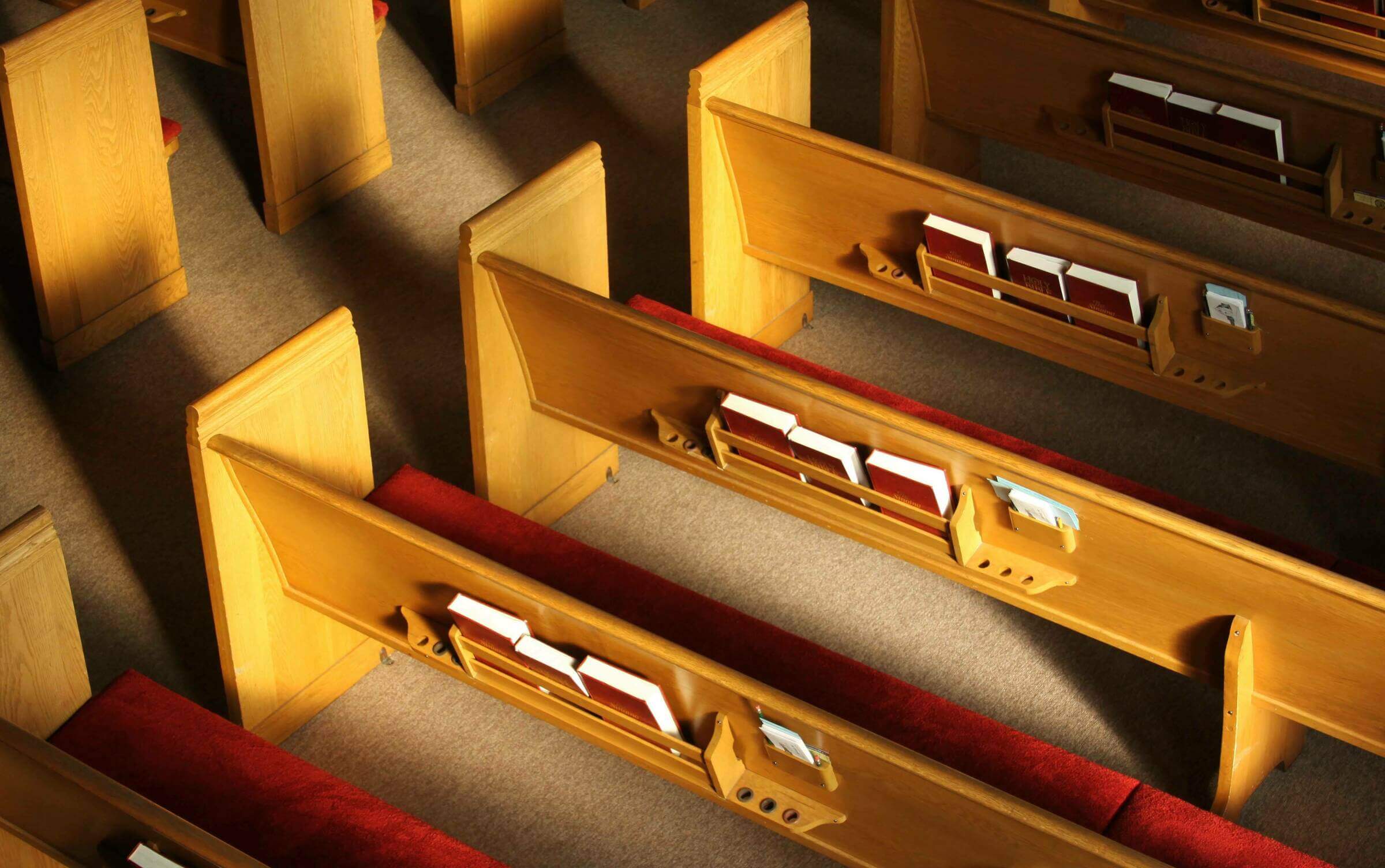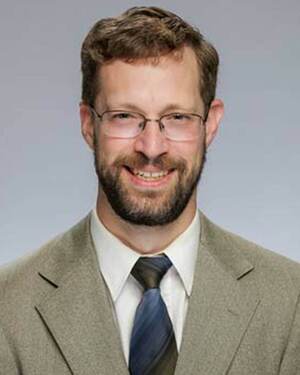Upward trend in ‘deaths of despair’ linked to drop in religious participation, economist finds

Over the past 20 years, the death rate from drug poisonings in the U.S. has tripled and suicide and alcoholic liver disease death rates have increased by 30 percent — particularly among middle-aged white Americans, according to studies by the National Center for Health Statistics.
Further evidence shows that these dramatic changes in mortality rates within American communities actually began in the late 20th century, but researchers have been unable to pinpoint a cause for these “deaths of despair.”

To fill that gap in understanding, Daniel Hungerman, professor of economics at the University of Notre Dame, and his co-authors studied the connection between a sharp downturn of religious participation in the late 1980s and the swift rise in deaths of white Americans ages 45 to 54 in the early 1990s. Their findings were recently issued in a working paper by the National Bureau of Economic Research.
While the post-1999 mortality increase has justifiably attracted a large amount of attention with the introduction of OxyContin, “this change in the early 1990s is perhaps as striking but has received little attention in prior work,” the researchers explained.
“It’s pretty unusual for an advanced country like America to see people start dying sooner, at a younger age,” Hungerman said. “And what we found is that there is a direct correlation between the effects of religious practice and these mortality rates from alcoholism, suicide and overdose.”
Their study highlighted how changes in religious participation can have large consequences for the health and well-being of middle-aged, white individuals, wrote Hungerman and his co-authors.
“Our work provides evidence that religious participation matters,” they said.
Bringing the data together, comparing
Comparing mortality data from the Centers for Disease Control and Prevention’s Multiple Cause of Death files and religiosity survey data from the General Social Survey, the researchers identified a definite correlation between the decline in religious affiliation and church attendance and the increase in deaths of despair among middle-aged white Americans that began in the late 1980s and continued through the 1990s.
Researchers also found that states that had experienced larger declines in religious participation in the last 15 years of the century saw larger increases in deaths of despair. Notably, the decline in religious participation was not specifically driven by males or females, nor was it initially observed for non-white Americans.
Hungerman and his co-authors presented evidence that this decline in religious participation was driven more by a collective resistance to formal or organized religion than by changes in personal religious beliefs or spiritual habits.
“What happened is that they quit going to church — they stopped affiliating with religious places,” Hungerman said. “But if you ask them, ‘Do you believe in God,’ then that is still a constant. It has more to do with the social aspect of the formal participation.”
One explanation for the decline in religious activity is the shifting relationship between religion and politics, Hungerman theorized. “There are some indications that more progressively oriented individuals stopped affiliating with religion,” he said. “Another is an increase in education — those educational gains may have led to lower participation.”
The causes of the decline in religiosity and religious participation are less important than the consequences, however, Hungerman said. “We’ve accepted this decline has occurred, and now we want to show what it has caused in people’s lives.”
Historical ‘shocks’ contribute to decline
The researchers considered two additional “shocks” occurring at different times in our history that seem to have also contributed to the decrease in faith activities and increase in mortality. One was the repeal of the blue laws in the 1960s and 1970s. These laws restricted commerce during a certain time of week, typically Sunday mornings. Unlike some blue laws of today, which limit alcohol sales on Sundays, the earlier iterations prohibited all labor on that day — which allowed more people to attend church versus working or going shopping. According to the researchers, repealing the blue laws led to a 5-10 percent negative impact on weekly attendance of religious services for middle-aged Americans and increased the rate of deaths of despair by two deaths per 100,000 people.
The second shock occurred much later with the increase of opioid use in the 1990s, particularly following the introduction of the prescription drug OxyContin in 1996 and its subsequent abuse.
“With these sorts of shocks occurring, we see — for the groups affected — a coinciding change in suicides, heavy drinking and drug use,” Hungerman said. “We’re seeing these relatively smaller, earlier shocks as setting the stage for the later, larger effects (sharp mortality rate increases). We use that as another piece of evidence to help us better understand this relationship between what you’re doing on Sunday morning and your health outcomes.”
Cultural influence or true despair?
Scientists have had difficulty studying the cultural or social influences in this arena, Hungerman said. “Despite the title ‘deaths of despair,’ they have struggled to see whether or not despair actually plays any role here, or if it’s just a cultural anomaly, more generally. We think our research provides novel evidence that it does.”
Hungerman and his co-authors noted that prior studies have indicated nonreligious organizations are unable to provide the same sense of community, closeness and social service that religious traditions have typically supplied. And while they acknowledged that their study confirmed the importance of religion alone in promoting well-being, future research can be done to see if other cultural institutions — including voluntary and community activities — could have similar large-scale effects on health and mortality.
Latest Faculty & Staff
- Three Notre Dame faculty named 2024 Guggenheim FellowsBarbara Montero, a professor of philosophy; Gretchen Reydams-Schils, a professor in the Program of Liberal Studies; and Roy Scranton, an associate professor of English and director of the Creative Writing Program and the Environmental Humanities Initiative, are among the 188 scholars, scientists and artists chosen from approximately 3,000 applicants for the fellowship. The Guggenheim Foundation awards these fellowships to outstanding scholars in order to add to the educational, literary, artistic and scientific power of the country.
- Essays on democracy draw attention to critical threats, explore safeguards ahead of Jan. 6Shortly after Jan. 6, 2021, when a mob stormed the U.S. Capitol building, Notre Dame’s Rooney Center for the Study of American Democracy established the January 6th, 2025, Project, which includes 10 Notre Dame faculty who are preeminent scholars of democracy. In an effort to understand the social, political, psychological and demographic factors that led to that troublesome day, the group created a collection of 14 essays aimed at drawing attention to the vulnerabilities in our democratic system and the threats building against it, hoping to create consensus on ways to remedy both problems.
- Carter Snead testifies before US Senate Judiciary CommitteeO. Carter Snead, the Charles E. Rice Professor of Law and director of the de Nicola Center for Ethics and Culture at the University of Notre Dame, offered expert testimony on Wednesday (March 20) before the U.S. Senate Committee on the Judiciary on the current legal landscape following the landmark Supreme Court decision in Dobbs v. Jackson Women’s Health Organization.
- In memoriam: Ronald Weber, American studies professor emeritusRonald Weber, a professor emeritus of American studies at the University of Notre Dame, died March 12 in Valparaiso, Indiana. He was 89.
- Political scientist shares China-Global South expertise with policymakersFor more than a decade, China has invested heavily in the economic development of countries collectively known as the Global South. More recently, China has demonstrated that its ambitions are growing beyond the economic realm and extending into the geopolitical sphere. This shift carries implications not only for the developing countries that are the beneficiaries of China’s investment, but also for the United States and other developed democracies, says Joshua Eisenman, associate professor of politics in the Keough School of Global Affairs.
- Jennifer Newsome Martin to succeed O. Carter Snead as director of de Nicola Center for Ethics and CultureSarah Mustillo, the I.A. O’Shaughnessy Dean of Arts and Letters, has appointed Notre Dame theologian Jennifer Newsome Martin to be the next director of the de Nicola Center for Ethics and Culture. She will succeed O. Carter Snead, the Charles E. Rice Professor of Law, who will conclude 12 years of service in this role on June 30.













